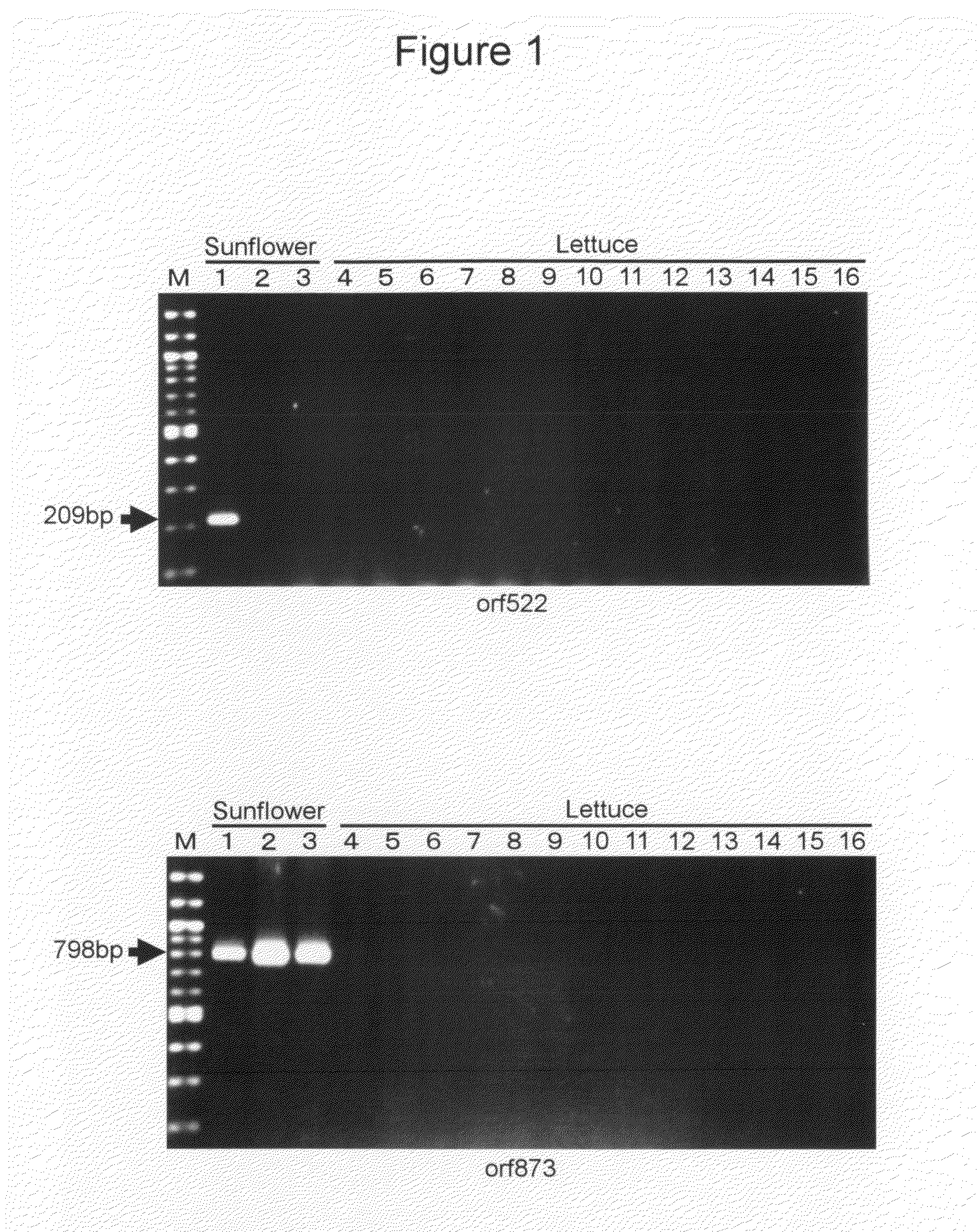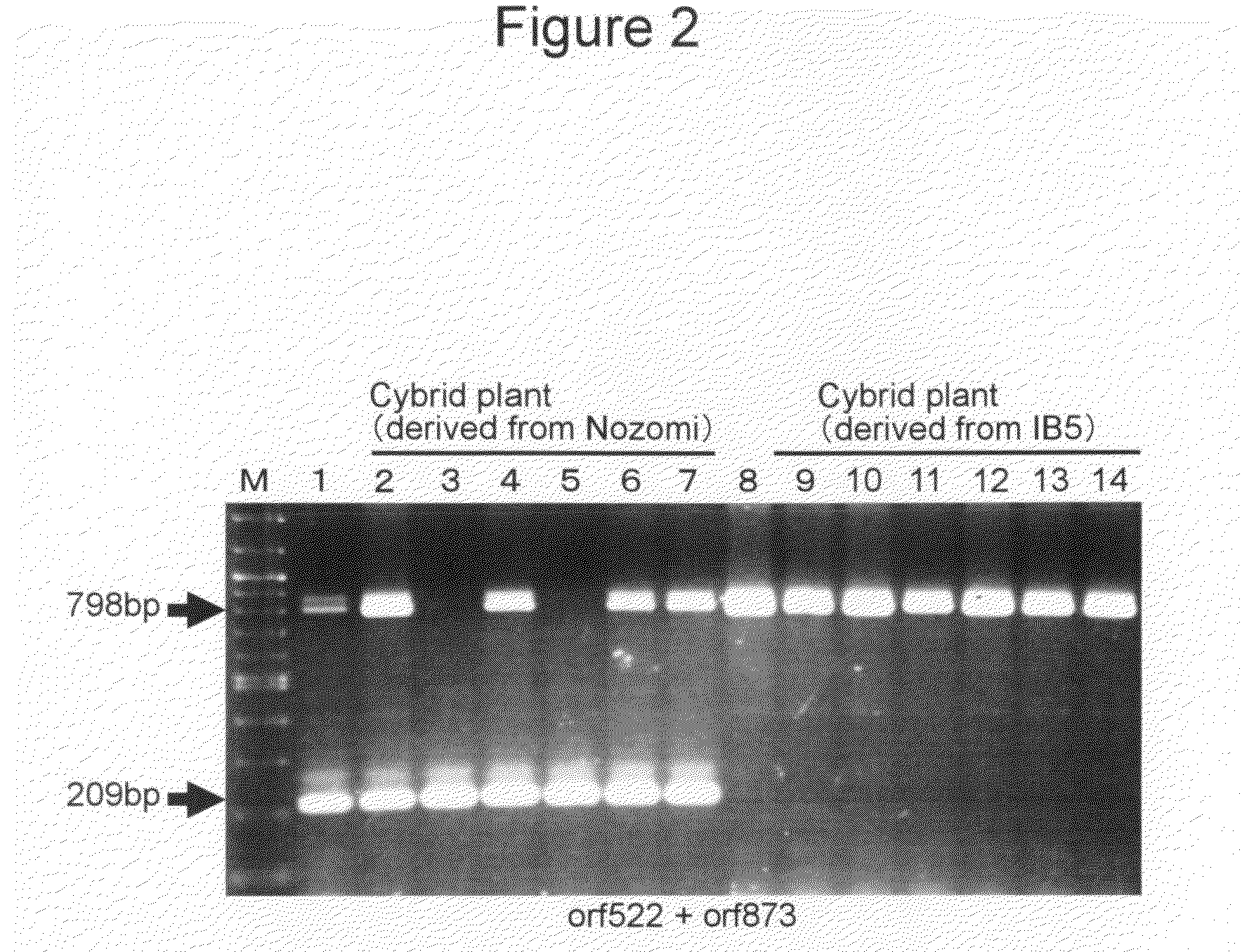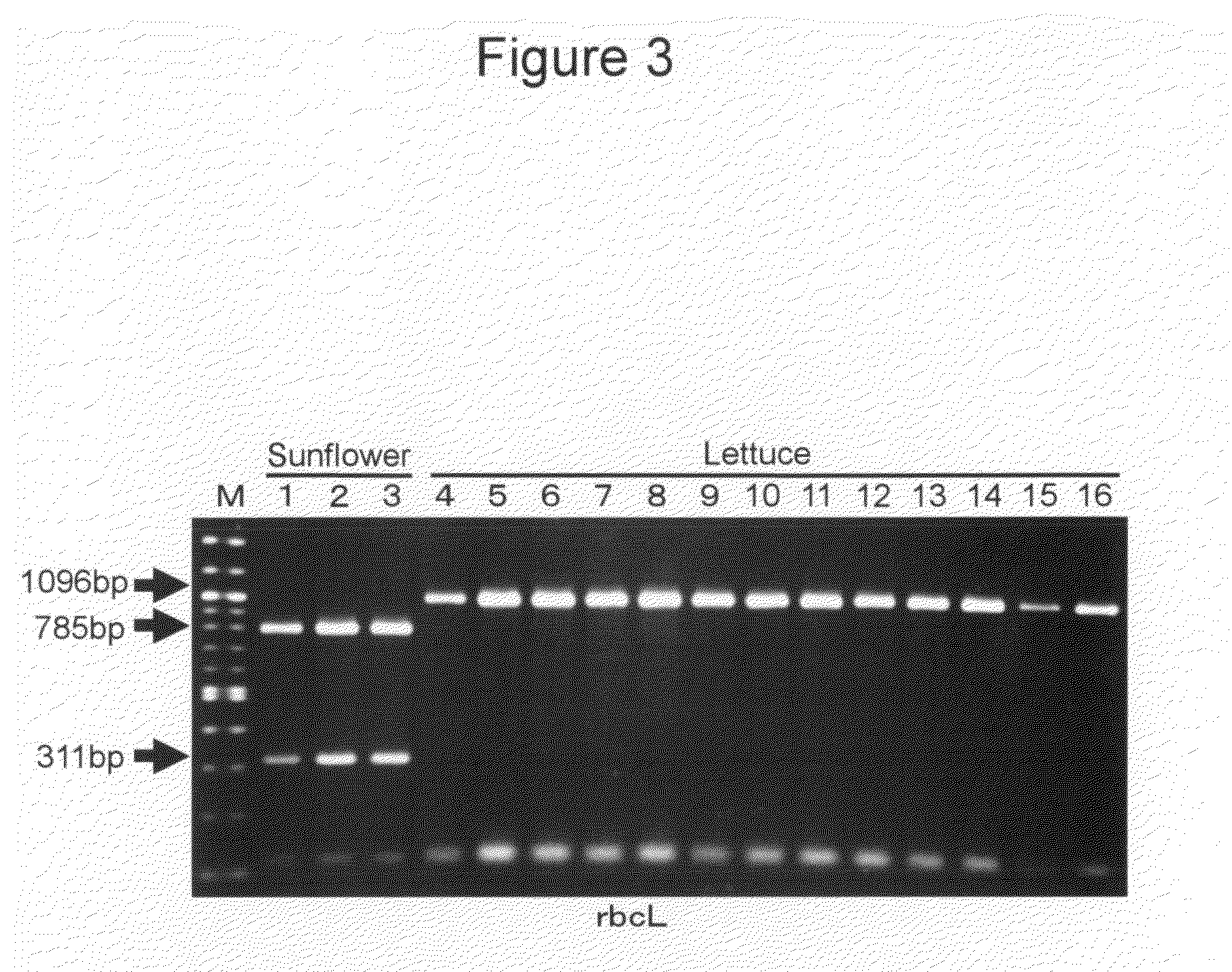Cybrid plant of the genus Lactuca and method for producing the same
a hybrid plant and genus technology, applied in the preparation of hybrid cells, plant cells, biochemistry apparatus and processes, etc., can solve the problems of uneconomical production of f1 seed, difficult emasculation of crops, uneconomical techniques, etc., and achieve the effect of stable cytoplasmic male lettu
- Summary
- Abstract
- Description
- Claims
- Application Information
AI Technical Summary
Benefits of technology
Problems solved by technology
Method used
Image
Examples
example 1
(1) Preparation of Protoplasts
(i) Isolation of Lettuce Protoplasts
[0146]This example describes a procedure using the lettuce variety ‘Tell me’ (Sakata Seed). Sterilized seeds were plated on MS medium supplemented with 10 g / L sucrose and 8 g / L agar, and cultured for one month at 20° C. with 16 hours of light a day. Approximately 1 g of opened leaves were harvested, and cut into pieces of about 2 mm in size. They were soaked in 10 ml of CPW salts solution containing 0.4% Meicelase, 0.08% Maserozyme R-10, and mannitol, and incubated at 25° C. for 16 hours without moving.
[0147]The protoplast suspension was filtered through 92 micrometer nylon mesh, and centrifuged at 500 rpm for 3 minutes. After removing the supernatant, the pellet was resuspended into 2 ml of Solution S containing 15 mM iodoacetamide, and incubated at 25° C. for 5 minutes without moving. The iodoacetamide-treated protoplasts were centrifuged at 300 rpm for 3 minutes, and resuspended into 10 ml of Solution S after remov...
example 2
[0181]Cytoplasmic male sterile cybrid plant “50125-3” was produced using “1216-2-T1” as donor material to provide cytoplasm and performing asymmetric protoplast fusion with “V lettuce” (Kaneko Seeds). In the flower of “50125-3”, no pollen grains adhered to the pistil were observed, and also no pollen grains were observed in the anther of the flower. Furthermore, no obvious differences were observed in the shape of the flower organ and the like, in comparison with “V lettuce”. When the selected cytoplasmic male sterile line “50125-3” was crossed with pollen of a lettuce with normal cytoplasm, it fruited and produced seed normally. This confirmed that female fertility was maintained in the line. In addition, when “50125-3” was crossed with pollen of a male fertile lettuce, all progeny plants were male sterile. This confirmed that the male sterility was caused by cytoplasm and was cytoplasmic inheritance.
[0182]Table 7 shows the PCR and PCR-RFLP analysis results of mitochondrial genes o...
PUM
| Property | Measurement | Unit |
|---|---|---|
| pore size | aaaaa | aaaaa |
| size | aaaaa | aaaaa |
| volume | aaaaa | aaaaa |
Abstract
Description
Claims
Application Information
 Login to View More
Login to View More - R&D
- Intellectual Property
- Life Sciences
- Materials
- Tech Scout
- Unparalleled Data Quality
- Higher Quality Content
- 60% Fewer Hallucinations
Browse by: Latest US Patents, China's latest patents, Technical Efficacy Thesaurus, Application Domain, Technology Topic, Popular Technical Reports.
© 2025 PatSnap. All rights reserved.Legal|Privacy policy|Modern Slavery Act Transparency Statement|Sitemap|About US| Contact US: help@patsnap.com



